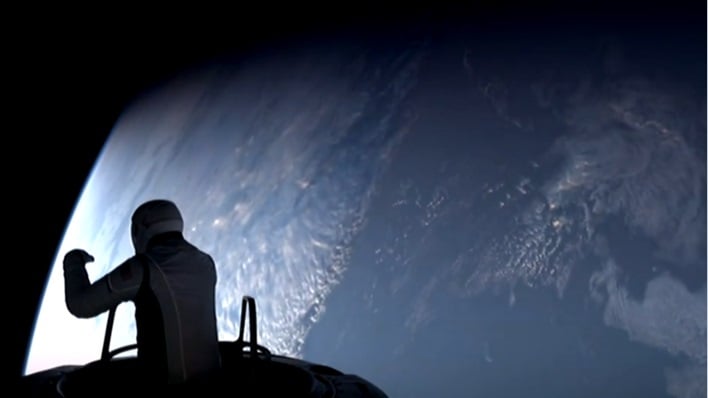
SpaceX has performed the first private spacewalk during the Polaris Dawn mission, viewing Earth 458 miles below. Crew members Jared Isaacman and Sarah Gillis took turns floating just outside the Dragon capsule while wearing specially-designed suits.
After having its launch delayed due to the FAA grounding all SpaceX Falcon 9 rockets following an incident where a booster burst into flames shortly after landing atop a drone ship in the Atlantic Ocean, Polaris Dawn successfully launched this past Tuesday. The historic mission, comprised of billionaire Jared Isaacman, Scott Poteet, and two SpaceX employees, Anna Menon and Sarah Gillis, is the first of three flights Isaacman purchased from SpaceX in 2022. It was also the first privately-financed mission to perform a spacewalk in the history of space exploration.
As Isaacman took his first steps outside the Dragon capsule early Thursday, he took a moment to take it all in and remarked, “Back at home we all have a lot of work to do, but from here Earth sure looks like a perfect world.”
The crew began preparations for the spacewalk shortly after liftoff, according to SpaceX. The crew all took part in a two-day pre-breathe process designed to prevent decompression sickness by slowly acclimatizing the crew to lower pressures, while also slowly increasing oxygen levels with the spacecraft’s cabin. Once they had completed the breathing exercises, the four-person crew began preparing for the spacewalk, which included donning specially designed EVA suits, completing suit leak checks, and venting Dragon down to vacuum.
Once the hatch was opened, Issacman, Poteet, Gillis, and Menon were exposed to the vacuum of space, the first time four individuals experienced it at the same time. Commander Jared Isaacman and Mission Specialist Sarah Gillis each exited the vehicle, completed a series of tests to evaluate the suit’s mobility, thermal systems, and the Dragon mobility aid “Skywalker” before returning to the cabin and closing the hatch.

Isaacman and Gillis did not “free float” away from the Dragon capsule, as the spacesuits were not equipped with their own oxygen supply or other life support equipment.
“We’re not going to be doing the Ed White float,” explained Isaacman in an interview ahead of the launch. “That might look cool, but it doesn’t really help SpaceX learn a lot about the performance (of the spacesuit). It’s not very useful or helpful for figuring out how to be able to work in a suit.”
The duo floated one at a time just outside the hatch, with Isaacman explaining, “We’re going to make use of various mobility aids the SpaceX team has engineered, and it’ll look like we’re doing a little bit of a dance.” He added, “The idea is to learn as much as we possibly can about this suit and get it back to the engineers to inform future suit design evolutions.”
What stole the show, however, was the incredible view the astronauts had during the event. “It’s gorgeous,” remarked Isaacman as he took a moment to take in the Earth below.

Once the spacewalk was complete and the hatch was closed, Dragon was re-pressurized, and cabin oxygen and pressure levels confirmed. The crew then were able to remove their EVA suits, officially bringing the historic event to an end.
While NASA may not be sponsoring the Polaris Dawn mission, it’s doing a few pieces of research onboard. The research will help the space agency’s scientists better understand how exposure to space conditions affects the human body. The crew will test new medical approaches and technology on telemedicine capabilities, gather data on space motion sickness, and better characterize flight-associated injury risks.
“Each mission, whether the crew is comprised of commercial or NASA astronauts, provides a key opportunity to expand our knowledge about how spaceflight affects human health,” explained Jancy McPhee, associate chief scientist for human research at NASA. “Information gathered from Polaris Dawn will give us critical insights to help NASA plan for deeper space travel to the Moon and Mars.”
As mentioned before, the Polaris Dawn mission is just the first of three purchased by Isaacman from SpaceX. The second flight will be another Dragon mission, while the third will be the first piloted flight of SpaceX’s Super Heavy-Starship rocket. When asked if he would disclose any details, such as to the cost, he simply replied, “Not a chance.”